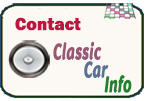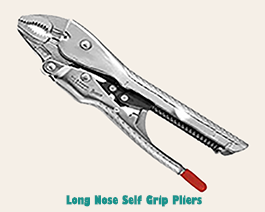
Even though they many have never serviced a car in their lives, let alone restore one, most people will own at least a basic set of hand tools.
The chances are that they will have more sentimental value than work value.
As far as hand tools are concerned, it is an almost impossible task to list all of the hundreds of permutations available today, with every item having a potential use.
That's the reason why it is preferable to start relatively small and build up a range of tools as the project proceeds, and a better understanding of the jobs to be done develops.
Building up a tool kit requires the restorer to justify each purchase to themselves as a part of the overall budget, considering if there is a justifiable future use for the tool, irrespective of its cost.
If the tool is liable to be of use very occasionally, there is always the possibility to call upon the goodwill of a friend or fellow restorer who you know has such a tool and borrow it for a few hours or days.
That kind of arrangement would work even better if a reciprocal agreement can be worked out.
No restoration workshop toolkit can be complete without a set of spanners. The restorer should consider that if they are restoring a vehicle produced in the UK, it will have been fitted with imperial sized nuts and bolts while European built cars use metric scale nuts and bolts.
The restorer will have to decide to opt for either open or closed ring spanners, both of which combinations have their pluses and minuses.
In general terms, ring spanners are a far better proposition than the open-ended type, but there are many occasions when only an open ender can be used.
A compromise worth considering is to buy combination spanners with a ring at one end and an open-ended spanner at the other.
Should the nature of the restoration justify it, it might be worth considering acquiring a set of socket spanners, an option more sometimes regarded as a bit of luxury although that can make life more comfortable in the workshop.
When it comes to screwdrivers, a small set of good qualityis really all that's required. A couple of blade-ended electrical screwdrivers, one with a short shank and one long, will be in constant use, as well as two or three other blade-enders of varying sizes.
Make sure that the larger ones, in particular, are comfortable to hold and provide a firm grip.
![]()
A small set of hexagonal Allen keys will probably come in handy, and you won't get very far without a good hacksawand a spare set of blades.
Although they should only be used occasionally in exceptional circumstances, a suitable workshop will have to be equipped with a hammer or two
These should include a trim pin hammer, a medium-sized club hammer weighing around 1 pound, and a soft-faced rubber mallet, preferably with interchangeable heads.
Along with the hammers should come a set of assorted size punches, including a centre punch and perhaps a set of cold chisels.
For non-precise, relatively long measurements, use a tape measure. Retractable metal designs give acceptable accuracy and are available very cheaply. The tape should have a moveable end tip —which, when pushed up against a surface, will measure the distance from the surface when the tape is hooked over an edge.
It is important to ensure to always buy a tape measure capable of expanding to 3 meters, with a brightly-coloured body, making it easier to find.
 In the modern workshop digital callipers are proving themselves nearly as valuable as the humble tape measure and steel rule and have become so inexpensive that no home workshop should be without one. Digital callipers are most commonly available in 150 and 200mm (6 and 8in) measuring sizes.
In the modern workshop digital callipers are proving themselves nearly as valuable as the humble tape measure and steel rule and have become so inexpensive that no home workshop should be without one. Digital callipers are most commonly available in 150 and 200mm (6 and 8in) measuring sizes.
To house all of these tools, another necessary part of any tool kit is a box to house them in.
There are, of course, dozens of special tools available for the garage workshop, many of which are used only very occasionally for specific tasks that are handled in-house.
These include repairing the vehicle's engine, gearbox and clutch, the brakes, suspension and steering, the electrical system, bodywork repairs and restoration, paintwork interior and exterior trim, including renewing the vehicle's upholstery.
 All of these professions require specialist tools and specialist knowledge and experience, meaning that the restorer should take a reality check on their capabilities before rushing out to buy tools that they do not know how to use, initially focusing on tools that should be regarded as essentials for a simple home workshop.
All of these professions require specialist tools and specialist knowledge and experience, meaning that the restorer should take a reality check on their capabilities before rushing out to buy tools that they do not know how to use, initially focusing on tools that should be regarded as essentials for a simple home workshop.
Back to the homepage- and don't spare the horsepower.
Got a question, a comment, a suggestion or an offer??? - FEEL FREE TO CONTACT US ANYTIME!!;
A guide to acquiring, restoring and maintaining UK or European Classic Cars of the Fifties and Sixties- as well as a recollection of the iconic cars of the era and the visionaries that produced them.






